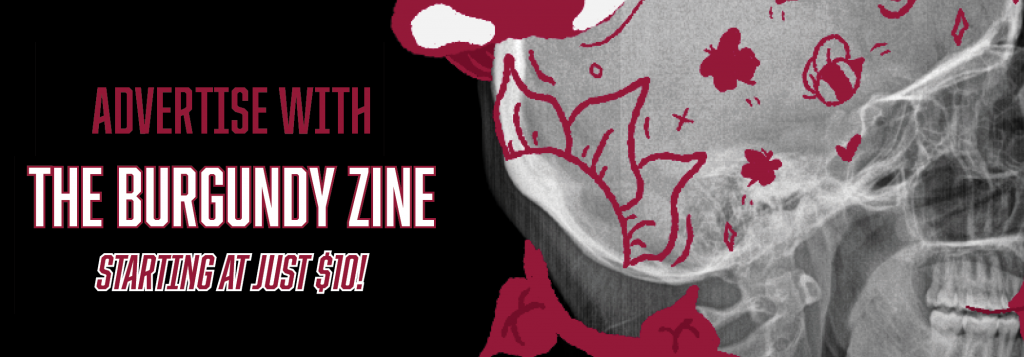January 23, 2021
The “SAD” Truth About How Cheat Days Could Impact Your Health

By: burgundy bug
French macarons and donuts on a white table
Source: Envato Elements
Added sugars. Saturated fats. Sodium. Mmm, tasty, right? These are the food groups The U.S. Department of Agriculture says our population is over-indulging in.
But hey, they can’t hurt in moderation, right? Alright, alright. If balance is key, then surely cheat days shouldn’t make too much of a difference, no?
Well, according to a study in the Neurobiology of Pain journal, eating healthy most of the time (five days a week) might not be enough to curtail the negative impact cheat days could have on your health.
More specifically — the impact cheat days could have on your ability to heal from inflammation, which is a staple of chronic pain.
Mimicking the “Standard American Diet” (or “SAD,” for short), researchers whipped up a food selection for mice that’s high in processed carbohydrates and fats.
They also created an anti-inflammatory diet (AID). Although this diet is high in fats too, the main sources of fat in the AID are flaxseed and soybean oil.
By contrast, the main sources of fats in the SAD come from lard, tallow, milkfat, and hydrogenated vegetable shortening.
To gauge how these diets affect recovery time from inflammatory injury, researchers compared the results between:
- Mice who were fed the SAD
- Mice who were fed the AID
- Mice who were fed a combination of both (AID-SAD; AID five days per week, SAD two days per week)
- Mice who just consumed regular chow.
Their goal in the AID-SAD group was to mimic the “cheat days” that are so often seen in American dieting patterns.
All of the mice were fed regular chow for two-weeks before starting their new, 16-week diets.
In addition to looking at inflammatory injury recovery, the researchers looked at variables such as body weight, glucose tolerance, and gut microbial diversity, as well.
The Standard American Diet and Inflammatory Pain (in Mice)
Wild Wood mouse (Apodemus sylvaticus) peeking from behind a log on the forest floor
Source: Envato Elements
Mice who were chowing down on the SAD expressed signs of allodynia — pain from stimuli that isn’t normally painful (i.e. a light touch) — for 11 days. It took them 13 days to reach full recovery.
On the other hand, those who consumed the AID displayed allodynia for four days. It took this group six days to fully recover.
The AID-SAD group, despite eating healthy for roughly 70 percent of the time, expressed allodynia for 11 days and took 13 days to recover — just like the all SAD group.
Lastly, those who stayed on a regular chow diet displayed allodynia for six days and took eight days to recover.
“We found that SAD significantly prolonged recovery time and increased the activation of immune cells in the spinal cord,” the study explains. “In mice, prolonged access to SAD also increased T cell infiltration in the spinal cord and brain.”
For context, T cells are an essential part of your immune system. They’re white blood cells that respond to foreign substances in the body so it can launch into attack.
The Standard American Diet and Body Weight (in Mice)

All mice in the study gained weight, but sex appears to have played a role in their gains, as well.
Male mice in the SAD group gained the most weight, whereas female mice in the AID-SAD and AID groups gained the most weight.
The Standard American Diet and Glucose Tolerance (in Mice)
The researchers found no significant effects of the SAD on glucose tolerance in mice during the eight and 16 week assessments.
“The SAD is considered a high-carbohydrate, high-fat diet,” the study says. “Therefore, it is plausible that the increased carbohydrate ratio resulted in tolerance to an intraperitoneal glucose injection.”
By contrast, female mice who were fed the AID had higher levels of blood sugar.
The Standard American Diet and the Gut Microbiome (in Mice)
“Overall, microbial community structure differed by diet treatment,” the study says.
Along with differences in overall microbial diversity, mice who consumed the SAD had a significant abundance of Proteobacteria. According to a BioMed Research International journal review, these bacteria are a “possible microbial signature of disease.”
“An increase in Proteobacteria is a sign of gut imbalance,” the Neurobiology of Pain study explains. “It’s seen in disease states such as metabolic disorders and in diabetic patients.”
However, overall differences in microbial diversity between both groups didn’t appear to affect their recovery time.
In Conclusion
The gut microbiome is intrinsically intertwined with our immune system, the vital defense mechanism that unleashes a wombo-combo of inflammation on harmful stimuli (pathogens, damaged cells, toxic compounds, etc…).
While the present study was done on mice, there are parallels between their microbiome and ours. In turn, we can draw some draw insights on how a diet high in processed carbs and fats could impact our health, too.
The results of this study demonstrate that eating healthy most of the time isn’t enough to combat the effects the “Standard American Diet” has on the immune response of mice.
Mice who consumed the SAD experienced allodynia for nearly three times as many days as those who consumed the AID. It also took the SAD group twice as long to fully-recover.
Now that isn’t to say cheat days are something to be ashamed of, nor should you shame anyone for their dietary choices. But if you’re consciously trying to improve your health or reduce chronic pain, making cheat days a staple of your routine might be counterintuitive.
Read: Think With Your Gut
The Burgundy Zine
Interested in having content featured in an upcoming blog post or issue of The Burgundy Zine? Head on over to the submissions page!
For all other inquiries, please fulfill a contact form.
Subscribe to have Burgundy Zine content sent directly to your email inbox!



